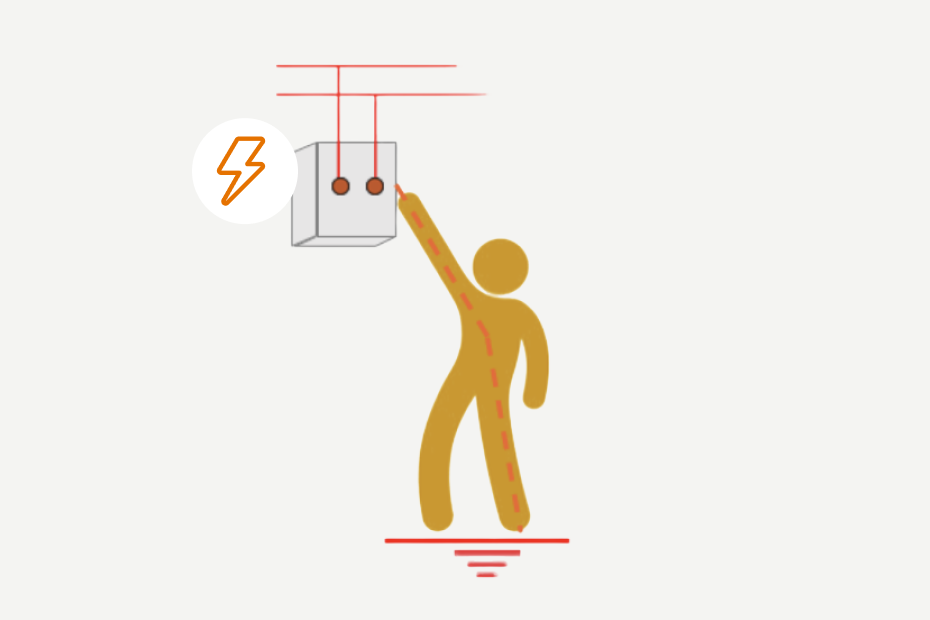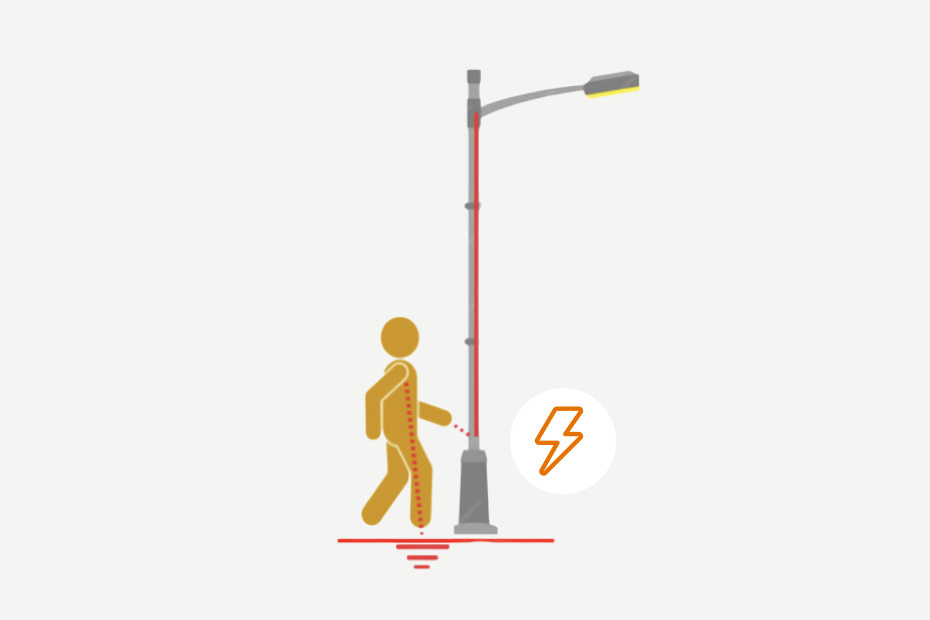
What are the types of electrical contact?

Direct electrical contact
The human body comes into contact with elements that are normally live.

Indirect electrical contact
The human body comes into contact with “masses”, elements that should never be live.
The effects of electricity on the human body
- Death by ventricular fibrillation.
- Death by respiratory arrest and asphyxia.
- Muscle tetanization (sticking).
- Electrolysis of the blood by direct current (appearance of clots that can obstruct an artery).
- Internal or external contact burns (fatal or not).
- Burns by electric arc, particle projections, etc.
- Eye injuries due to electric arc (conjunctivitis, blindness).
Possible electrical hazards for fairground workers
- Electrical discharges by direct contact with live elements.
- Electrical discharges by indirect contact when touching live elements (insulation failure or connection error).
- Electric arc generally caused by a short circuit.
We also have to consider other associated risks such as:
- Falls or blows as a consequence of shock or electric arc.
- Fires or explosions caused by electricity.

Be careful!
It is not necessary to touch a live element to be electrocuted. Getting close enough to an energized electrical installation without protecting yourself can cause an electric arc and current passage. Check the equipment before handling it because it may deteriorate with use or with the passage of time and an indirect contact could be caused. Always respect the safety distances.
How to avoid an accident
- Carrying out work without voltage (5 golden rules).
- Keeping installations in good condition and live elements inaccessible.
- Grounding the masses.
- Placing differential switches with a minimum value of leakage current that causes the disconnection of the installation.
- Using equipment with circuit separation.
- Having protected wiring.
- Not manipulating the protections.
Personal protective equipment
- Use specific equipment for electrical work such as helmet, dielectric gloves or face shields.
Tools or equipment
- Use portable tools or equipment with adequate insulation, minimum class II.
- In case of using ladders, make sure they are suitable for electrical work, made of fiber. Never metallic.
- Electrical installations must be handled by personnel trained in electrical work and with the qualification established by law.
- When carrying out electrical work, do not use metallic elements to avoid possible electric arcs, such as watches, rings, earrings or metallic belts.

Protect yourself before you act and
make sure that both the
the injured person as well as the rest of the
people present in the area are kept out of
keep away from any possible electrical contact.
electrical contact.

Immediately notify the
112 and the distribution
distribution company
UFD at 900 333 999.

Rescue the injured person and apply resuscitation
appropriate resuscitation techniques
techniques until the arrival of the
medical services arrive.
Remember!
- Even if the hook-ups of the attractions are temporary and of short duration, they must alwayscomply with the legal regulations and the requirements established by the distribution company.
- Keep in mind that electrical installations can be dangerous if they are not carried out correctly, both for workers and visitors to the fair.
- A fault in the insulation of an installation, a defective installation or one that lacks the appropriate protections, can cause a person to suffer a shock.
- It is not necessary to touch a live element to be electrocuted. Simply by approaching or bringing a conductive material (ring, chain…) close to the voltage source we could suffer a passage of current.
- It is very important that you notify the deterioration of elements or any risk that you detect in order to correct the situation and make the fair safe both for workers and for the enjoyment of visitors.
Do you want to download the information on this page about Electrical Safety in Fishing?





